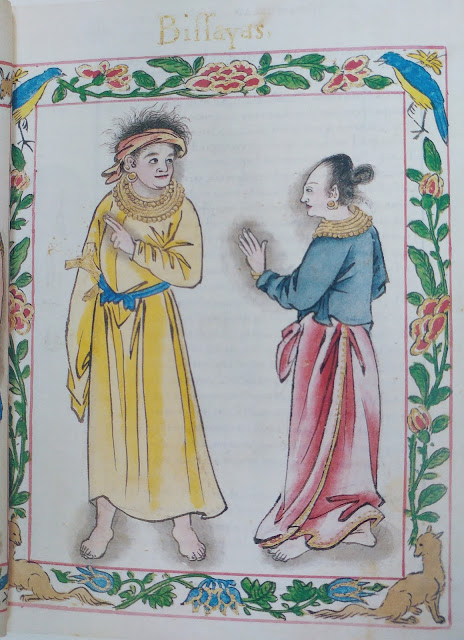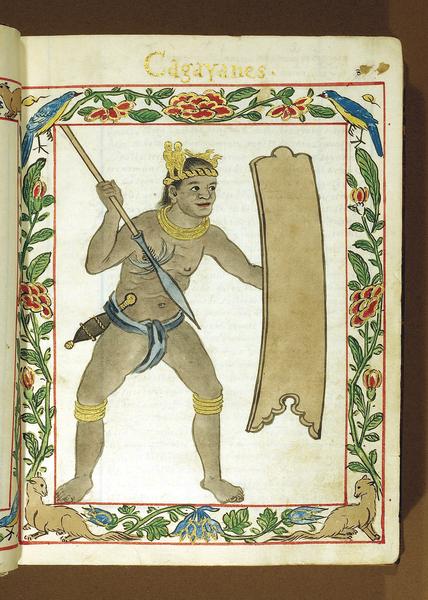What seems to be the connection between a British Peer, World War II, a historian, and the Philippines? A 307-page manuscript that is full of colored drawings, superstitions, norms, and descriptions of flora and fauna that is known today as the Boxer Codex.
The twenty-month British occupation of Manila and Cavite from 1762-1764 saw a massive sacking of academic and historical materials that were brought back to the United Kingdom by the forces of Brigadier General William Draper. A huge percentage of that plunder came from the Augustinian library.
In the next century or so, the colored illustrated manuscript would end up in the private collection of the Earl of Ilchester. Due to the Blitz bombing by the Germans of Britain in 1940, Holland House the main estate of the Earl suffered irreparable damages. He had to auction off his heirlooms to cover the repairs.
Professor Charles Ralph Boxer ended up buying the book which at that time was called the "Manila Manuscript". It eventually became known as the Boxer Codex. Professor Boxer made the Manuscript accessible to scholars and historians.
The Boxer Codex is now with the Lilly Library of Indiana University. You may view a digital copy of it online. The Newberry Library in Chicago also has photostat copies of the manuscript.
Local Publishing Company, Vibal, has recently produced an edition of the modern translation in both English and Spanish by Ma. Luisa Garcia, Carlos Quirino (Philippine National Artist for Historical Literature), and Mauro Garcia. Quirino worked closely with Boxer in the 1950s during the production of the original undertaking of the project.
In her essay about the Boxer Codex, Patricia May Jurilla has entertainingly written the history of this manuscript. Historians have speculated that the creation of the Boxer Codex was sponsored by either Luis Perez Dasmarinas, the son of Spanish Governor-General Gomez Perez Dasmarinas; a Spanish soldier, or Juan de Cuellar, the governor's secretary. Only someone who was rich and influential could have produced and owned this expensive body of work.
The Philippines during the late 16th-century was the farthest colony of Imperial Spain. The book provided a visual depiction to satisfy the curiosity of the mind. The exploratory nature of the manuscript illustrated, not just the Philippines but also China, Japan, the Moluccas, Ladrones, Siam, and Java.
Several of the eyewitness accounts that were included in the manuscript came from Spanish and Portuguese explorers, priests, merchants, and civil servants. These relaciones were first-hand experiences recorded in writing. The first entry was dated 1590 and authorship was attributed to either Spanish Governor-General Gomez Perez Dasmarinas or his son, Luis. The father and son were on their way to the Philippines from Acapulco for Don Gomez to take the mantle of governing the islands.
The exact date of printing could not be conclusively proven. Additional accounts were dated as late as 1598. By this time, Governor-General Gomez Perez Dasmarinas has been dead since 1593 when he was murdered by his Chinese rowers on their way to Cambodia for a military expedition. His son, Luis, became temporary Governor-General until the arrival of Francisco Tello in 1596 who was officially designated by the Spanish monarch.
The richly-illustrated manuscript could have been commissioned and started after 1593 up until the death of Luis Perez Dasmarinas in 1603 during the Sangley Rebellion in Manila.
There are at least 15 pictures of the types of inhabitants that you may encounter in the Philippines. Even before, the various regional differences of the Filipinos were apparent in their appearance and manner of dress.
The Visayans had tattooed bodies or fair-skinned while in Zambales, they were darker and had a hairstyle that involved shaving the forehead and front half of the head but retaining loose long hair at the back.
Even the class system practiced by the ethnic groups were portrayed in the Codex. The social ranking was distinct from one place to another. Clothing (or the lack of it) discretely distinguished the differences.
The Visayans had tattooed bodies or fair-skinned while in Zambales, they were darker and had a hairstyle that involved shaving the forehead and front half of the head but retaining loose long hair at the back.
Even the class system practiced by the ethnic groups were portrayed in the Codex. The social ranking was distinct from one place to another. Clothing (or the lack of it) discretely distinguished the differences.
Another thing that you would notice while looking at the illustrations is the abundance of gold jewelry worn by the Filipinos. The Spaniards were obsessed with gold. In their belief that the islands were full of gold, they willingly exchanged Brazil for the Philippines in one of their treaties with Portugal.
If you study the path of conquest the Spanish conquistadors made through the Philippines, they would always push for explorations towards the mountains in search of gold. This realization came to me while writing my article about the Franciscan churches in Laguna.
The images are beautifully rendered and framed in a style that is reminiscent of European art. But, historians have concurred that the artists were either the Sangleys (Chinese) or Indios (Filipino).
The following gallery shows what the 16th-century Filipinos looked like in the eyes of the Europeans.
The following gallery shows what the 16th-century Filipinos looked like in the eyes of the Europeans.
 |
| A pair of gold-embellished Visayan Noble couple. "shimmering sashes of woven gold with ornate repousse buckles.. while lighter cloth waistbands adorned with cord weights...rattled with every step.." |
 |
| Visayan Couple who belonged to the nobility is depicted with gold embellishments. |
For further readings, you can find my references here. Photos from the Kasaysayan Series and the Lilly Library Digital Collection. Photo descriptions from Boxer Codex, transcribed and edited by Isaac Donoso, translated and annotated by Ma. Luisa Garcia, Carlos Quirino, and Mauro Garcia.
Postscript: Some information were updated and edited on September 21, 2020.













Comments
email nyo po ako unicaijaakoniama@gmail.com
Meron pong Souza & Turley translation ang Boxer Codex. Tinalakay nila mula sa mga Ladrones (Chamorros) ng Marianas/Guam, sunod ay mga Cagayanes (Ibanag?), Bisaya, tapos mga Moros (Tagalog). Pati mga taga-Borneo, Thailand, Java, Japan, Tsina, etc. tinalakay rin nila.
Why or why not?